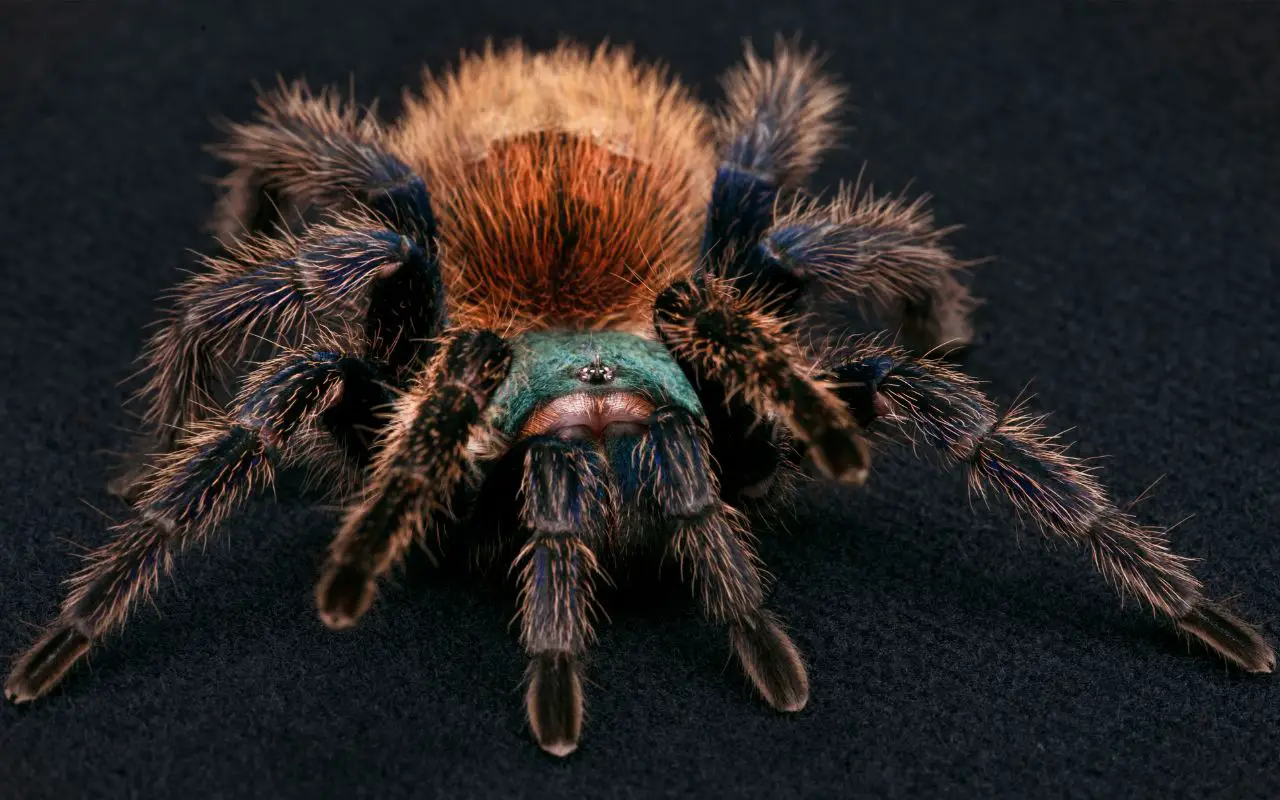Last updated on February 1st, 2023 at 10:09 am
This guide covers the basics of Arizona Blonde Tarantula care, from life expectancy, habitat and enclosure, to venom and feeding…
Are desert blond tarantulas hard to take care of?
A Desert Blond Tarantula is an exotic and coveted spider, native to the Sonoran Desert in northern Mexico and southern Arizona. This spider is quiet, nocturnal, and doesn’t require a lot of space or attention, but it does need some care.
As with all tarantulas, it will require some maintenance, including frequent feeding, cleaning, and additional care.
Mexican blond tarantulas need a deep terrarium with a drier substrate. Light mistings of water should be given once or twice a week.
While they are docile, they are susceptible to fungal infections if kept in damp conditions. These tarantulas also occasionally go for extended periods of time between feedings.
Unlikev some other species of tarantulas, desert blondes are docile and tolerant of handling. Their venom is not strong enough to harm a human, but it can cause severe injury if ingested by a pet. They don’t need constant attention from their owner and can live on their own without human interaction for months.
According to most keepers, the Arizona Blonde is one of the best tarantulas for beginners.
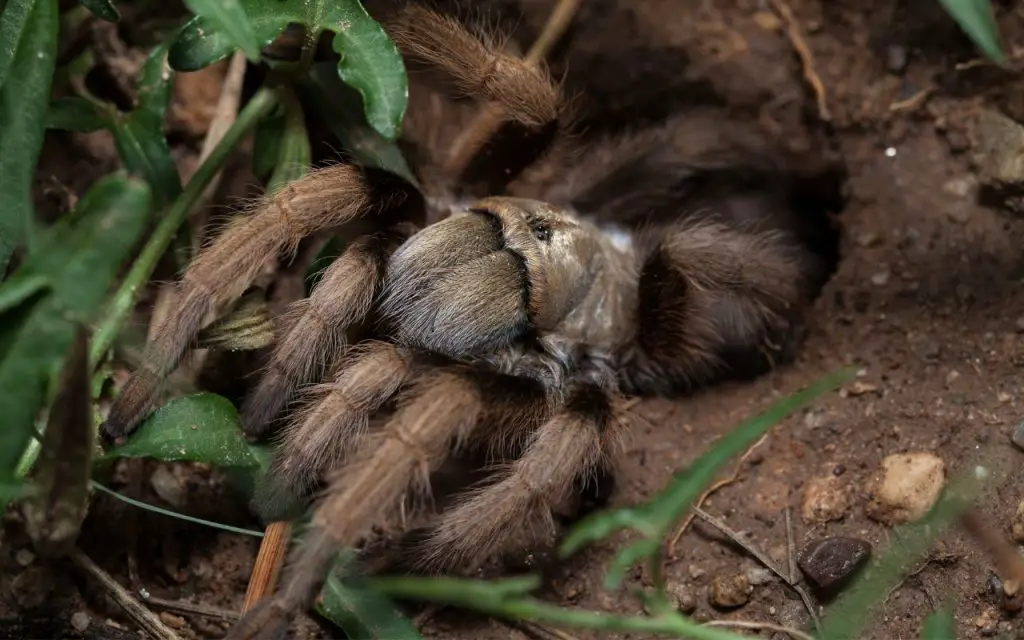
Lifespan
The life span of the Arizona blonde tarantula varies according to the gender. Females can live up to twenty-four years and males can live up to five years. Males die younger but tend to be much more active, searching for females relentlessly.
Occasionally, female Arizona blonde tarantulas can live up to thirty years if cared for properly.
The life span of an Arizona blonde tarantula depends on the type of habitat it lives in. The species prefers living in desert habitats but are commonly kept as pets. In their natural habitat, they may kill each other and are not sociable. They may sting other animals or run away. For this reason, it is advisable to keep Arizona blonde tarantulas in separate habitats.
The Arizona blonde tarantula is one of the New World species. Its main instinct is to avoid humans and other animals. The spiders are also extremely docile. While their venom is mild, you should be careful when handling them.
Unlike many other arachnids, this species can be handled without causing undue stress to them. It won’t shorten their lifespan.
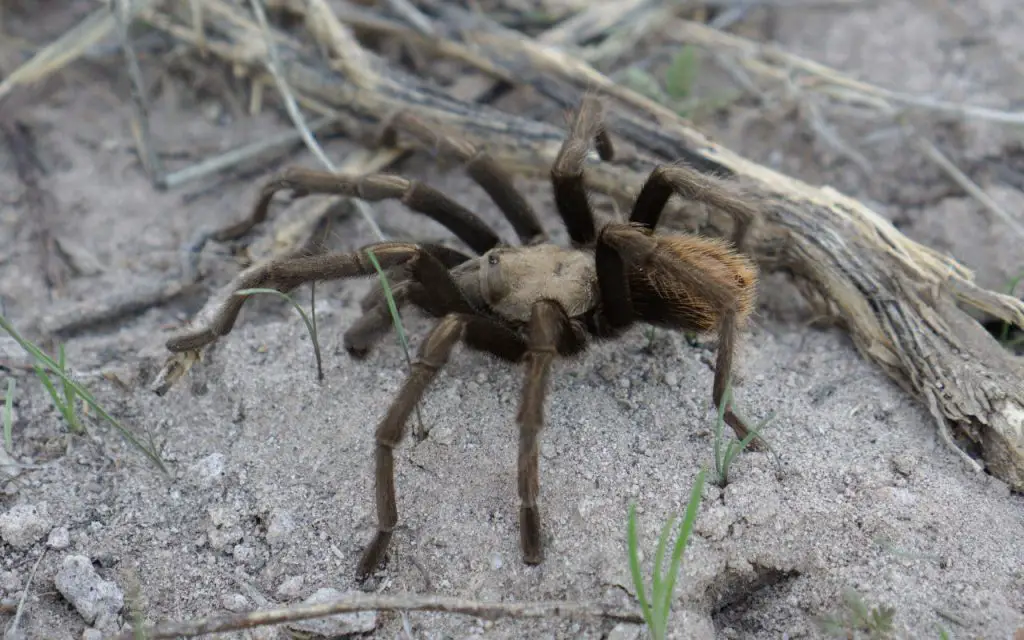
Habitat and enclosure
The habitat and enclosure of an Arizona Blonde Tarantula are important aspects of owning this species. The ideal temperature for an Arizona Blonde Tarantula is a constant temperature of 75 – 80 degrees F.
The natural habitat of this species is warm and dry, with a humidity level of sixty to seventy percent in their burrows. The best enclosures for this species are small, closed-in compartments, and are not too tall. They can be glass, plastic or perspex.
The enclosure should be at least six inches deep and wider than twice the animal’s legspan.
Juvenile tarantulas prefer enclosed space, again with 65 to 70 percent humidity. They can live in a glass or plastic container. Keep the enclosure secure, as over-cleaning will stress the tarantula. They are also extremely good escape artists!
Arizona Blonde Tarantulas like to burrow and will dig a one to two-inch-wide tunnel in their surroundings, into which they retreat during the day. Cocoa coir should be provided as substrate so they can do this.
Venom
The venom of the Arizona blonde tarantula is not dangerous to humans. Although they have the ability to bite, they rarely do so. The bite is essentially similar to that of a bee sting, but the size of the fangs makes the pain more severe.
Venom from tarantulas is not medically significant, but the venom from this arachnid is enough to cause an itchy, burning sensation. However, it can cause an infection and lead to serious medical problems, if you fail to clean the bite with soap and water.
During the rainy season, this species is active in the deserts. The male is approximately 1.73 inches long with black legs and a copper cephalothorax. When looking for mates, they wander the desert for hours, meaning they come into contact with humans more often.
Occasionally, accidental bites occur from people handling them or stepping on them.
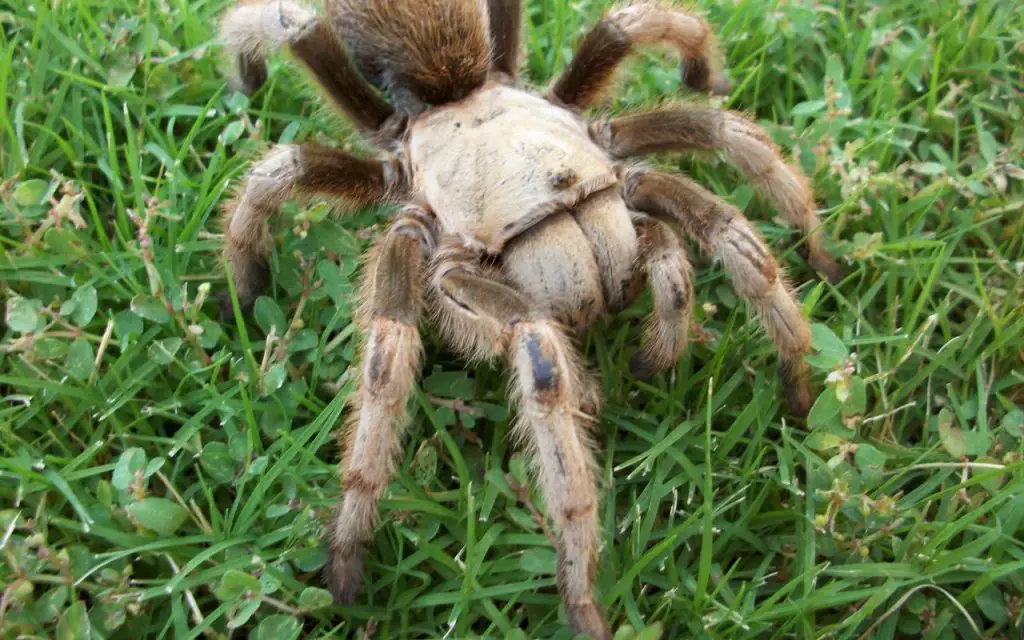
Diet
The right diet for your Arizona blonde tarantula is crucial for your pet’s health and wellbeing. This species is not known for drinking much water, so they get their hydration from food.
Suitable prey items include:
- crickets
- mealworms
- hornworms
- locusts
- dubia roaches
Crickets are generally the most widely available. They offer a nutritious diet so long as they are “gut-loaded” which means fed a vitamin-rich diet before feeding. Ask your supplier about this if you are unsure.
Temperature
The ideal temperature for an Arizona blonde tarantula’s enclosure is seventy-five to eighty degrees Fahrenheit. In the wild, they are used to temperature drops during the night.
They also prefer a higher humidity level within their substrate, ideally 65 to seventy percent. For these reasons, it is important to provide a suitable habitat for this species.
If your house isn’t that warm, you can heat the enclosure with a heat pad. This heating method will work, but must be regulated with a thermostat and temperature should be double checked with a digital thermometer or infrared thermometer gun. Using a heat lamp is not recommended, as this can dehydrate your pet.
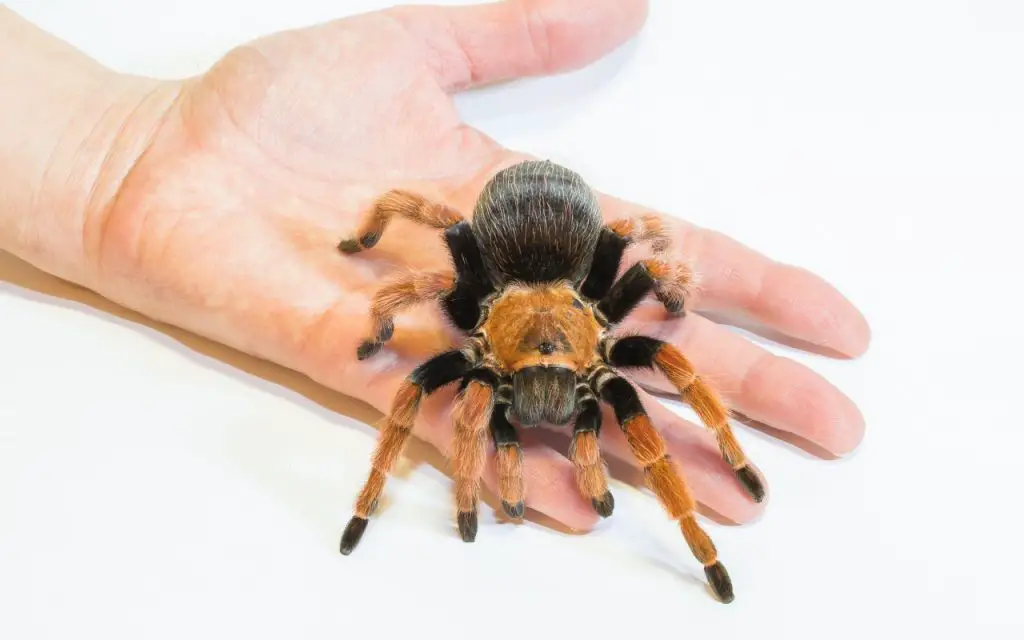
Water and humidity
When caring for an Arizona Blonde Tarantula, you need to consider several factors. The species is not particularly large, so you won’t need a huge terrarium. However, smaller terrariums are better for this species. Small terrariums also allow the tarantula to capture prey easier.
The best humidity level is 70% in the substrate, but air humidity can be lower. Make sure that the humidity is consistent to avoid the tarantula getting sick. The humidity in the habitat is the main factor in determining whether the tarantula is healthy.
Drinking water should be provided in a shallow dish, with sponge in the bottom so that there’s no chance of the spider drowning.
Price
The Arizona blonde tarantula is a reasonably priced spider. Overall, tarantulas are mostly for show and are not a high-maintenance pet so don’t expect a lot of on-going expenses. In addition, you can find the female Arizona tarantulas for sale in pet shops where you can get the enclosure at the same time, sometimes as part of a deal.
The price of an adult or sling Arizona blonde tarantula depends on several factors, such as the size and age of the spider. Young slings can be purchased for less than a dozen dollars, while adult specimens can cost as much as $50 or $100.
This price is definitely reasonable, however, if you are looking for a low-maintenance pet that won’t cost the earth.
If you’re interested in getting an Arizona blonde tarantula as a pet, remember that males don’t stay alive for very long.
In fact, males rarely live longer than six months after mating. They can spend months without eating, and they are also prone to falling.
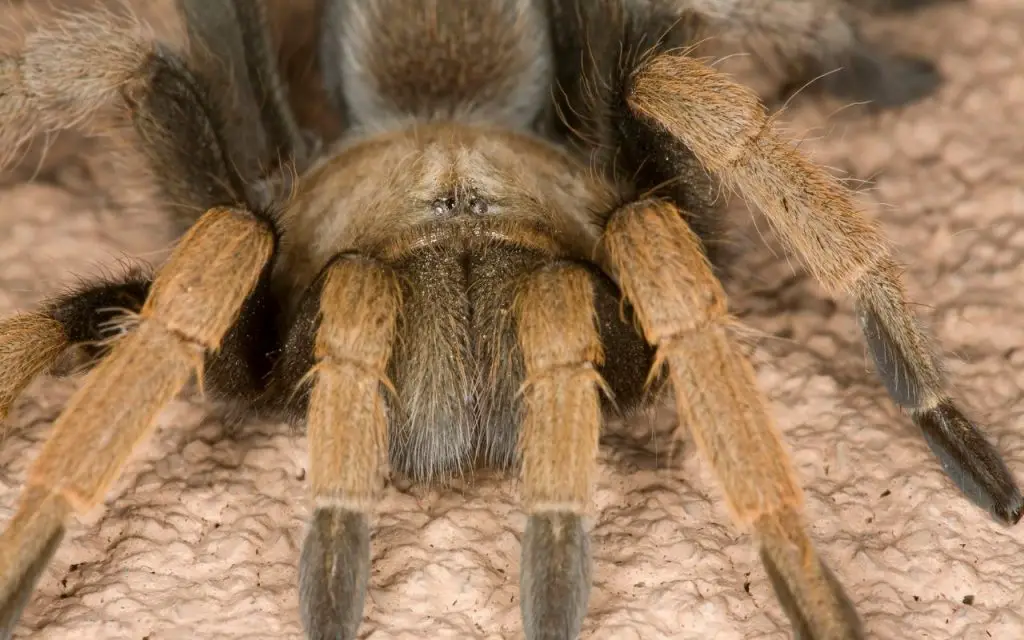
Arizona Blonde Tarantula FAQs
How fast do desert blonde tarantulas grow?
The Mexican blond tarantula grows slowly, with females reaching maturity at about 10 years of age. They are large with thick stocky legs and fine blonde hairs. Their legs are darker brown near the body. Females have a solid tan color. Male tarantulas mature at a younger age, but don’t live very long. They have black legs and copper-colored carapaces.
How big do desert blonde tarantulas get?
They can live up to 25 years and can reach three to five inches (7.5 to 13 cm) in length. This tarantula is capable of running at ten miles per hour (16 kph). It weighs between 23 and 85 grams and feeds on small insects. While their bite is painful, there is little risk of allergic reaction to the tarantula’s venom. In addition, tarantulas grow slowly and molt less frequently than other tarantula species. As a rule, the males are more slender than females, with thinner, longer legs in proportion to the body.
Is an Arizona blonde good for beginners?
The Arizona blonde tarantula, also known as the western or Mexican desert tarantula, is one of about 900 species of tarantulas, all of which make good pets. As a beginner, you might consider getting one. It’s easy to care for, but you must do some research and prepare yourself before taking care of the animal. Arizona blondes are very easy to care for and do not need a large terrarium.





